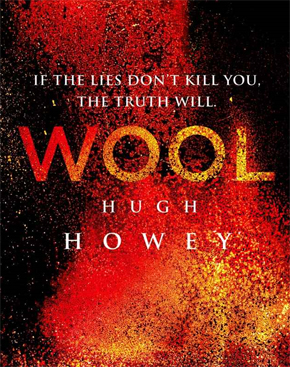 We have been discussing Self-Published books for the last few weeks and we have been talking for months about how the publishing industry is changing, so I thought I should make sure you don’t miss this article written by Wall Street Journal’s Alexandra Alter. It is an excellent article and one you really should read (the whole thing). It is long, but worth the five minutes of time. If for some reason you can’t take the time to read it, click on the above link and at least listen to the interview with Ms. Alter about her article. But in the article, she talks about how Hugh Howey got his book off the ground.
We have been discussing Self-Published books for the last few weeks and we have been talking for months about how the publishing industry is changing, so I thought I should make sure you don’t miss this article written by Wall Street Journal’s Alexandra Alter. It is an excellent article and one you really should read (the whole thing). It is long, but worth the five minutes of time. If for some reason you can’t take the time to read it, click on the above link and at least listen to the interview with Ms. Alter about her article. But in the article, she talks about how Hugh Howey got his book off the ground.
This just might be the article that keeps you going when things seem bleak. I just ordered Part One of WOOL on Amazon. It is free for download to your Kindle.
Simon & Schuster has put down six figures for print rights to a post-apocalyptic thriller called “Wool” that it believes could draw the same readers that made “The Hunger Games” trilogy a success.
Simon & Schuster’s print-only editions of Hugh Howey’s Wool, which brought in over a million dollars as a self-published ebook was published yesterday. Howey’s long holdout for a traditional publishing deal came a reality and allowed him to keep his ebook rights.
Hugh Howey’s postapocalyptic thriller “Wool” has sold more than half a million copies and generated more than 5,260 Amazon reviews. Mr. Howey has raked in more than a million dollars in royalties and sold the film rights to “Alien” producer Ridley Scott. And Simon & Schuster hasn’t even released the book yet.
In a highly unusual deal, Simon & Schuster acquired print publication rights to “Wool” while allowing Mr. Howey to keep the e-book rights himself. Mr. Howey self-published “Wool” as a serial novel in 2011, and took a rare stand by refusing to sell the digital rights. Last year, he turned down multiple seven-figure offers from publishers before reaching a mid-six-figure, print-only deal with Simon & Schuster.
“I had made seven figures on my own, so it was easy to walk away,” says Mr. Howey, 37, a college dropout who worked as a yacht captain, a roofer and a bookseller before he started self-publishing. “I thought, ‘How are you guys going to sell six times what I’m selling now?’ “
It’s a sign of how far the balance of power has shifted toward authors in the new digital publishing landscape. Self-published titles made up 25% of the top-selling books on Amazon last year. Four independent authors have sold more than a million Kindle copies of their books, and 23 have sold more than 250,000, according to Amazon.
Publishing houses that once ignored independent authors are now furiously courting them. In the past year, more than 60 independent authors have landed contracts with traditional publishers. Several won seven-figure advances. A handful have negotiated deals that allow them to continue selling e-books on their own, including romance writers Bella Andre and Colleen Hoover, who have each sold more than a million copies of their books.
Print-only deals remain extremely rare. Few publishers want to part with the fastest-growing segment of the industry. E-book sales for adult fiction and nonfiction grew by 36% in the first three quarters of 2012, compared with the previous year. Mass-market paperback sales shrank by 17% in the same period, while hardcover sales declined by 2.4%, according to a recent report from the Association of American Publishers.
When “Wool” hits bookstores next Tuesday, publishing industry insiders will be watching the experiment closely. Simon & Schuster will release a $15 paperback and a $26 hardcover simultaneously, competing directly against Mr. Howey’s digital edition, which costs $5.99.
“We would have preferred to own all the rights, but that wasn’t going to happen,” says Simon & Schuster President and Publisher Jonathan Karp. “It was a very unusual circumstance.”
“Wool” became a viral hit last winter, a few months after Mr. Howey began publishing the five-part series on Amazon. The novel takes place in a postapocalyptic future where a few thousand remaining humans live in a giant, 144-story underground silo. Couples who want to have a child have to enter a lottery; tickets are distributed only when someone dies. Citizens who break the law are sent outside to choke to death on the toxic air. Those who are sent to their deaths are forced to clean the grime off the digital sensors that transmit grainy images of the ruined landscape to a screen inside the silo. The images are meant to remind residents that the world beyond the silo is deadly, but some begin to suspect their leaders are lying to them about what’s outside and how the world came to ruin.
Mr. Howey says he was watching cable news one day when he came up with the idea of a future where people get all of their information from a single, unreliable screen.
“Wool” landed just as the entertainment industry was searching for a high-concept, dystopian hit like Suzanne Collins’s young-adult “Hunger Games” trilogy or Justin Cronin’s postapocalyptic vampire novel “The Passage.” (Mr. Cronin blurbed “Wool,” calling it “an epic feat of imagination.”) The serial format helped build buzz and anticipation among binge readers who were desperate for the next installment, while the 99-cent price tag made each installment an easy impulse buy. “Wool” was the most favorably reviewed book on Amazon in 2012, with an average rating of 4.8 out of five stars. The novel seems to appeal to both men and women, and has attracted hard-core science fiction fans as well as general readers, much like “The Hunger Games.”
Mr. Howey comes across as a charming, self-deprecating goofball (he posted a video of himself doing ballet on his lawn on YouTube after he signed his publishing deal), but he’s proven to be a savage negotiator and slick marketer. He sent free copies of “Wool” to book bloggers and reviewers at Goodreads, a social-media site for avid readers. Early raves prompted more people to try the book, and the reviews snowballed. “Wool” now has more than 12,500 ratings and around 2,200 reviews on Goodreads. He hosted an “Ask Me Anything” session on the popular website Reddit, fielding users’ questions for more than 12 hours. He encouraged fan art and fan fiction set in the “Wool” universe; his readers have designed book covers and written their own novella-length takes on the story. He conscripted 30 of his most ardent fans to be “beta” readers who edit early drafts of his books for free.
Mr. Howey grew up in Monroe, N.C., the son of a farmer and a schoolteacher. As a teenager he devoured popular science fiction books like “The Hitchhiker’s Guide to the Galaxy” and “Ender’s Game,” and always had a wild imagination. He studied physics and English at the College of Charleston, but dropped out his junior year to sail to the Bahamas. He cycled through a series of odd jobs, working as a yacht captain, a roofer, and a technician for an audio-video company. Four years ago, he decided to give writing a shot. He and his wife were living in a 750-square foot house in Boone, N.C. He was unemployed; his wife, Amber Lyda, was working as a psychologist. He had an idea for a story about a young spaceship pilot who travels across the galaxy in search of her missing father. He sold the novel, “Molly Fyde and the Parsona Rescue,” to a small Indiana publisher for less than a thousand dollars. Sales were meager.
“When he first published ‘Molly Fyde,’ I’d call his wife and say, ‘How many books has he sold? Should I go to Amazon and buy three more?’” says his mother, Gay Murrill, who owns a yarn shop in Charleston.
Mr. Howey kept trying. He got a 30-hour-a-week job at a university bookstore that paid only $10 an hour but gave him some flexibility. He got up at two or three in the morning to write, and wrote through his lunch hour and after dinner. He designed his own cover art, enlisting his wife and sister to pose in photos. He would often jolt up in bed in the middle of the night to scribble down ideas.
“It was almost a compulsion for him,” says Ms. Lyda. Ms. Lyda said she pleaded with him to leave his pen open on his nightstand, because the clicking noise of his pen kept waking her up.
“Wool” started as a short story that Mr. Howey dashed off in three weeks. He posted it on Amazon for 99 cents in July 2011. Within three months, the story had sold 1,000 copies. Mr. Howey was stunned.
“I told my wife, ‘Baby, we’re going to be able to pay a couple of bills off this short story,’ ” he said.
Readers begged for a sequel, and in November, Mr. Howey released another installment. He sold more than 3,000 copies that month. The next month, he released two more installments and sold nearly 10,000 copies total. In January, he released the final installment, for $2.99, and published all five as a single volume, for $5.99. Collectively, he sold 23,000 copies of all the editions that month. “Wool” shot up Amazon’s science-fiction best-seller list. Mr. Howey quit his job.
Literary agents started courting him. The BBC proposed a television deal based on the series. Most of the agents wanted to auction off print and digital rights to the highest bidder. Mr. Howey wasn’t interested. One agent, Kristin Nelson, said she didn’t think he should sign away digital rights, but that she could help him with foreign rights and film and TV deals. He signed with her in January of last year. They sold the series in 24 foreign countries. Several British publishers bid on the book, and Century won rights for a high-six-figure sum.
Ms. Nelson also sent “Wool” to U.S. publishers, and received a few low six-figure offers. Mr. Howey turned them down. Through Amazon’s self-publishing platform, he was collecting 70% of royalties, which amounted to nearly $40,000 a month. Most publishers offer a digital royalty rate that amounts to 10% to 15% of a book’s retail price.
That spring, Mr. Howey began selling the books on Barnes & Noble‘s BKS -2.57%Nook and Kobo’s e-reader and through Apple’s iTunes store. An agent at United Talent Agency began shopping film rights. Three studios bid on the book. 20th Century Fox and Ridley Scott, director of the blockbuster science-fiction films “Blade Runner” and “Alien,” optioned it. Indie writer and director J Blakeson is writing the screenplay.
After news of the movie deal broke, publishers pounced again. Mr. Howey flew to New York in May to meet with five major publishers. Four of them bid. Mr. Howey, who by then was making $120,000 a month, wasn’t swayed. Some of the publishers wanted to change the book’s title, a proposal that Mr. Howey called “comical,” since it would sabotage his online branding efforts. Others insisted that he immediately take down his digital edition, which would erase all records of the thousands of five-star reviews the book had accumulated, forcing him to start from scratch.
One meeting went better than the others. Mr. Howey sat down with Mr. Karp, the head of Simon & Schuster, who had heard about “Wool” from two of his top editors and from Dave Cullen, author of “Columbine,” a 2009 book profiling the shooters behind the 1999 mass killing. “When I read more about it and saw what a culture phenomenon it had become, I realized it was something we should take seriously,” Mr. Karp says.
Mr. Karp was unusually solicitous, asking Mr. Howey what kind of deal he would accept. Mr. Howey said he wanted a co-publishing deal, where he kept digital rights and Simon & Schuster held hardcover and paperback rights. Mr. Karp was noncommittal, and said he’d be in touch.
Sales soared over the summer. Mr. Howey and his wife moved to Jupiter, Fla. and bought a slightly larger house—900 square feet. Mr. Howey continued to write and self-publish new books, including a zombie novel and prequels to “Wool” that explore how and why the silos were built.
In October, Amazon discounted “Wool” for 24 hours as part of its Kindle Daily Deal, a discount program that highlights select titles. Amazon dropped the price on the “Wool” Omnibus, which has all five stories, from $5.99 to $1.99. Mr. Howey sold 20,000 in a single day. New offers from publishers poured in, some in the low-seven-figure range.
Then Mr. Howey’s agent got an email from Mr. Karp, asking if they would consider a print-only deal. Ms. Nelson says she wrote him back, “Is this for real?” and he wrote back, “Yes.”
Simon & Schuster now has to transform a digital hit into a traditional print blockbuster. The publisher is sending Mr. Howey on an 11-city tour, and has planned a bold six-figure marketing campaign that will capitalize on the film news and online reviews. They are releasing the book simultaneously in hardcover and paperback in an attempt to capture both the library and first-edition collectors market as well as retailers like Target and Wal-Mart WMT +0.85%. Much of the online marketing will fall to Mr. Howey, who has proved himself to be adept at digital self promotion. He’s still selling 50,000 e-books a month.
“A lot of the things we normally teach authors to do, Hugh has been smart enough to do himself,” says Richard Rhorer, who oversees marketing at Simon & Schuster.
Mr. Howey just returned from book tours in Germany, Scotland, Wales and England, where “Wool” recently hit the best-seller lists. He’s starting to feel more like an established author. “Publishing is changing so quickly that we are all equal experts,” he said. “We’re all trying to figure this out.”
Mr. Howey recalls feeling anonymous at a science fiction conference last summer in Chicago. He got excited for a moment when a woman approached him—he thought she wanted his autograph—but she was looking for the bathroom.
Nearby, fantasy writer George R.R. Martin, author of the best-selling series “A Song of Ice and Fire,” was signing hundreds of books. Mr. Howey went up and introduced himself. When it became clear that Mr. Martin had never heard of him, Mr. Howey told him his novel was No. 6 on Amazon’s list of science-fiction and fantasy best sellers, behind Mr. Martin’s five books. Mr. Martin gamely signed a book for Mr. Howey, inscribing it “To # 6—Keep trying!”
A few months later, Mr. Howey landed at the top of the list, just ahead of Mr. Martin.
Talk tomorrow,
Kathy
Filed under:
article,
authors and illustrators,
Book Contracts,
Publishing Industry,
Self-publishing,
success Tagged:
Alexandra Alter,
Hugh Howey,
Wall Street Journal,
WOOL 

I am quoting now from a comment I received earlier this week from
Liviania, one of my very first young friends in this blogging arena. Her words, entire:
I'm at the Columbia Publishing Course right now, and one of the themes is that publishers need to be more transparent. They need to talk about what they do, so that authors understand the value of a publisher versus just putting an ebook on the internet themselves.
Your editor, your copyeditor . . . you blog so frequently and beautifully about the team behind your books. I'm sure they appreciate it even more than you can imagine.
I write about my editors, my copy editors, my dream editors, those collective teams because they matter to me. Because they have changed the way I've thought about books. Because they have made room, from time to time, for my stories, while keeping me safe from myself.
Judging from the quality of the minds of my students and of those younger bloggers who have befriended me both on this page and off of it, I can say with absolute assurance that there is a rising class of editorial types—a stellar cadre of wordlovers and wordsmiths, grammatical giants, and opinionated tastemakers that will define our next generation of books if we, as a culture, remain open to them.
We must, I think, remain open to them. Eric Felten, writing in the
Wall Street Journal (which has lately emerged as a hotspot for book talk) is of that opinion, too. Here he is, opining with a piece he's called:
"Cherish the Book Publishers—You'll Miss Them When They're Gone."
Sarah Palin’s book publishers have been forced to file a lawsuit after pages of her upcoming memoir were leaked.
HarperCollins Book Publishers filed legal papers on Friday against the company Gawker Media after they refused to remove pages from Palin’s second book America By Heart: Reflections On Family, Faith And Flag from their website.
on Saturday, a judge issued a temporary restraining order against Gawker, saying it had to take down the pages — which it did, removing the images and commentary relating to them — most shockingly, perhaps, without making any further comment.
Publisher HarperCollins — which is owned by Rupert Murdoch’s News Corp., which also owns Fox News, the network that employs Palin as a commentator — brought the suit in New York district court on Friday.
HarperCollins Publishers spokeswoman Tina Andreadis told the Wall Street Journal Saturday evening, “We see the ruling as a victory. Gawker shouldn’t have posted this. It’s a copyright infringement. We are defending our author and our publication.”
But is it infringement? What harm was there in bringing Palin’s pages to light last week? The book is not in draft form — in fact, it’s completely finished and will be in bookstores on Tuesday. Barring some kind of strange machinations, every page that Gawker put on its website will be available for anyone interested to see in just a few days.
The hearing about Gawker’s posting of Sarah Palin’s “America by Heart” is scheduled for Nov. 30.
According to The AP, a judge has now ordered Gawker to remove the offending pages until the issue has been resolved in court.
They had uploaded around 20 pages from the book to their site ahead of its publication date of November 23.
The lawsuit against Gawker will begin in a hearing on November 30.

A quickly assembled home team in the Canadian book publishers industry has claimed victory over the so-called “Toronto multinational book factories” with a deal to bring out another 40,000 copies of The Sentimentalists, Johanna Skibsrud’s largely unavailable, Giller Prize-winning novel.
Under the terms negotiated between tiny Gaspereau Press of Nova Scotia and Vancouver-based publisher Douglas & McIntyre, the Friesens Corp. of Altona, Man., has agreed to print a new paperback edition by this Friday. “Because of the urgency of the situation, we will pull out all the stops,” Friesens sales manager Doug Symington said.
The deal brings “three proudly independent Canadian entities” together to solve the crisis that emerged when Skibsrud’s unheralded debut novel won Canada’s most prestigious literary award, according to publisher Scott McIntyre. “With our sales, marketing and distribution system onside, an exceptional novel will quickly reach the wide audience it deserves,” he added.
The books should be available for sale early next week, according to McIntyre. Printed in paperback with a pumped-up cover image and the signature red sticker of a Giller Prize winner (as well as the Douglas & MacIntyre Book Publisher imprint on the spine), they will sell for $19.95 compared with the original edition’s $27.95 cover price.
Booksellers snapped up the entire new edition within hours of its being announced, according to McIntyre, and Friesens is reserving paper stock to print another 20,000.
Gaspereau Press made headlines across the country last week when it turned away Toronto publishers eager to bring out more copies of the award-winning book, which it had hand-printed in an edition of 800 copies and was reproducing at a rate of 1,000 copies a week even after it won the award. But even as the company attempted to justify the go-slow approach, calling the Giller win “an interesting opportunity to slow the world down a hair and let people realize that good books don’t go stale,” Gaspereau co-publisher Andrew Steeves was negotiating a new deal with Douglas & McIntyre.
“D&M had always been my back-pocket doomsday scenario,” Steeves said yesterday, adding, “I was as surprised as anyone when we actually won.” He added that the company will continue producing its deluxe edition with a wrapper printed on a hand-cranked letterpress.
Both publishers emphasized the advantage of the new deal to Skibsrud, who had remained quiet last week while her publisher vowed not to compromise its principles by selling large quantities of her novel to an eager public.
It was patience well rewarded, the author wrote yesterday in an e-mail to The Globe and Mail from Istanbul, where she is vacationing. Admitting that she “doesn’t have much knowledge or interest in the business end of things,” Skibsrud said she was “so glad that a solution has been arrived at that allows the books to be distributed widely without sacrificing any of Gaspereau Press’s practices and ideals, which make them so unique and special to work with.”
Even Friesens, a $70-million, can-do book manufacturer, is sympathetic with the Nova Scotians. “I get where they’re coming from and I can also somewhat understand the Toronto-versus-the-rest-of-the-world mentality that they’re showing,” Symington said, adding that Friesens and Gaspereau are a good philosophical fit.
“We’ve been around for 103 years, we’re employee-owned, we’re a privately held company, so all the staff out here has a high concern and a high regard for books,” he said. “We’re big, but we’re not so big, so to speak.”
The book is such a “cause célèbre it will just shoot out of the gate,” McIntyre predicted, saying that opinion on the matter
By: executivepublisher,
on 9/28/2010
Blog:
Schiel & Denver Book Publishers Blog
(
Login to Add to MyJacketFlap)
JacketFlap tags:
books,
self-publishing,
book publishing,
literary agent,
digital publishing,
Wall Street Journal,
Self Publishing,
book publishing industry,
book advances,
Association of American Publishers,
Book Publishers,
Add a tag
According to the Wall Street Journal, authors in the age of the digital e-book might face much the same fate as musicians face in the age of the shareable MP3.
An in-depth analysis on the economy of book publishing shows that as sales of hardcover books continues to plummet, book publishers are signing fewer books, and giving ever-smaller advances to the authors they do sign. “The new economics of the e-book make the author’s quandary painfully clear,” writes the Journal. “A new $28 hardcover book returns half, or $14, to the publisher, and 15%, or $4.20, to the author. Under many e-book deals currently, a digital book sells for $12.99, returning 70%, or $9.09, to the publisher and typically 25% of that, or $2.27, to the author.”
Ultimately the smaller margins realized from e-books lead book publishers to consolidate their bets on fewer books that still have a chance of becoming bigger hits in hardcover editions. And as the odds on those bets become longer with hardcover sales in decline, publishers are curbing their risks by offering smaller advances to writers.
“They offer, on average, $1,000 to $5,000 for advances, a fraction of the $50,000 to $100,000 advances that established book publishers typically paid in the past for debut literary fiction,” the Journal reports.
Of course, there will always be fiction. The economy of book publishing companies will likely not stamp out writing itself any more than the decline in music sales has rid the planet of music.
But it could amount to a literary race to the bottom, in which the potential Jonathan Franzens of tomorrow simply won’t have the financial incentive to spend 7 years working on their novels, and Franzen did with both “The Corrections” and “Freedom.”
One of the hallmarks of a digital world is supposed to be proliferation: in an age when anyone can distribute content for free, content is supposed to flourish. When any band can record themselves cheaply upload their music to a Schiel & Denver page for free, music is supposed to unfurl out of the confines corporate record labels. And indeed, over 13 million bands have registered pages on Myspace.
But the question remains, How many of those bands are any good? The landscape of bands with national followings doesn’t seem particularly more diverse now than it did in decades past—the difference is that in the self-publishing digital race to the bottom, fewer than ever are being rewarded financially.
The e-book market however, at least at this point, is different than a Myspace-style digital climate in that authors don’t upload books directly. Digital or not, the environment is still governed by publishers looking to stack their chips on a few possible hits. And the returns from those few hits offer smaller returns than ever.
Ironically rather than letting a thousand flowers bloom it seems that in the digital book space attention is more than ever weighted toward a few select hits rather than a diverse offering. Franzen’s “Freedom” has sold 35,000 copies in just two weeks. Meanwhile the Journal cites 2009 breakout novel “Woodsburner,” which won a number of awards including the Center for Fiction First Novel Prize—it has sold 351 copies to date.
In all of this the one thing that’s still not clear to me is that the cost of producing and shipping the books themselves isn’t addressed. The sale of a hardcover bo

 It would seem that even the Wall Street Journal is paying attention to the explosion of the digital books and the resourceful authors that navigate the complex and timely world of e-book publication.
It would seem that even the Wall Street Journal is paying attention to the explosion of the digital books and the resourceful authors that navigate the complex and timely world of e-book publication.
A recent article in the Journal, 'Vanity' Press Goes Digital mentioned authors who either can't get published, as in an example of author Karen McQuestion, who was rejected, self published, sold well and even has a film option with a Hollywood director. Not bad a way to start your career.
The Journal went on to mention authors like Joe Konrath. Joe is already a very well established (check out his Jackie Daniels series) author who took his work directly to the reader via Amazon and is succeeding admirably. Joe is selling like the proverbial hotcakes, he is also a master of marketing and a personality with a goofy, funny sense of humor, his books are a scary, spooky good read. He is in fact the complete package to sell well.
For mid-list authors, the e-book avenue or any avenue for that matter, is not an easy one to manage. You have to let your readers know you're out there. But first, you have to figure out if you even have any readers. If you're lucky enough to have established a following, albeit a small one, you now need to grow that readership, and somehow let them know you're out there.
The social networks are always a good idea, in fact a great idea, but how to tell all your friends out in the nebulous land of the internet that you're out there, without hitting them over the head and becoming a nuisance. That is my question? Does anyone have a few answers?
I regained my rights to two short stories, and this weekend I plan to go to the Amazon site and learn how to download and sell them. Amazon, it would appear actually helps the author promote the work, and they have vast resources at their fingertips. We'll see how it all works out.
Matt Connor is the talented photographer, a man with an eye for an incredible eye shot. More next week.
Till next time,
Margot Justes
www.mjustes.com
by Jane
Recently the
Wall Street Journal ran
an article titled "The Death of the Slush Pile." How incredibly sad, I thought.
One of my very first jobs in publishing was managing the slush pile at Bantam Books. I didn’t do much; all I was told to do was to log the manuscripts in, put them on a shelf and then two weeks later, reject them after nobody had looked at them. I hated doing it--those writers had worked so hard and yet, even all those years ago, there was nobody to read their work.
From that time on, I have had both respect and curiosity for “slush.” Even today, in a very difficult publishing market, I firmly believe that the slush pile can hold “buried treasure.”
And aside from the very public examples cited in the
WSJ piece, we at DGLM have proven that there are wonderful projects to be found if one is patient and persistent enough to look.
Jim McCarthy discovered Carrie Ryan in the slush pile. She wrote
The Forest of Hands and Teeth,
which Jim sent out on a Friday and sold the following Monday. He also found Victoria Laurie, one of his first clients in slush. Jim has sold 18 of her books in the last six years.
Mike Bourret found three of his biggest clients in slush: Lisa McMann, author of
Fade and
Wake, among others; Heather Brewer whose first book among many, was
Eighth Grade Bites; and Sara Zarr whose
Story of a Girl was a National Book Award finalist.
Our very own Mary Doria Russell lay in a colleague’s slush pile for almost a year and when he didn’t respond, her first novel,
The Sparrow, was passed along to me--and the rest is history.
So, no matter how busy I am, I have not forsaken the slush pile--and, hopefully, even in difficult times, I never will.
by Jane
The news coming out of last week’s Consumer Electronics Show in Las Vegas is very exciting for our business.
An article in last Friday’s Wall Street Journal and
another in Saturday’s New York Times announced that in the next several months over half a dozen new readers will be introduced into the market.
I say the more the better. This is definitely going to mean more readers and higher sales of books in all formats. I am delighted.
by Rachel
It’s always interested me to know the writing patterns and practices of authors, as each writer has their own quirks and habits to get words onto a page--some more outrageous than others (did Thomas Wolfe really write standing up beside a refrigerator and did Truman Capote only write while lying down, as has been mentioned over the years?).
In Virginia Woolf’s extended essay,
A Room of One’s Own, she stated that a woman had to have money and a room to herself if she was to ever write fiction. However, in more recent times, the
Wall Street Journal presented an article on author writing habits and how they’ve come to write bestselling books. Some of their quirky habits will raise an eyebrow, I’m sure, or--if you’re a writer yourself--perhaps these practices are simply the norm in composing the next great novel.
My writing habits--whether it be blogging for DGLM, writing an essay back in college, or simply a story that comes to mind--involve finding a very quiet room, a ridiculous amount of soda to consume, and playing my
Rain on a Tin Roof CD on repeat until I can’t write anymore.
Do you have any interesting/unusual habits while writing?
by Jim
The
Wall Street Journal has
an article on a letter that Random House CEO Markus Dohle sent out to agents on Friday. In the letter, Dohle casually mentioned his belief that Random House owns the digital rights to their entire backlist. Slow down, Smokey!
There’s a reason that almost all good publishing contracts include language that rights which are not specifically being acquired are reserved to the author. That language was placed there for the author’s protection specifically in the event of developments like electronic publishing technology—forms that couldn’t be foreseen at the time of the contract’s initial signing.
To say that electronic rights are suddenly included in the phrase “book form” is disingenuous. If that’s the case, why did later contracts go on to specifically list electronic publishing rights as negotiable terms in addition to the printed book rights? It’s also impossible to argue that ebooks were considered part of traditional book rights well before they were even a twinkle in Amazon’s eye.
We’re seeing a lot of publishers engaging in these sorts of rights grabs now and a lot of them are using semantics to pretend they’ve always had rights that were not, in fact, included in the purview of the original contract. And it isn’t just limited to ebooks. It makes sense that in times of economic troubles, publishers will be trying to hold onto absolutely every potential source of income that they can. But that doesn’t make it right or acceptable.
There’s a whole lot more conversation that’s a’comin’ on this one. Stay tuned.
by Rachel
In an interview
in today’s Wall Street Journal, Alice Munro talks about why she’s attracted to writing short fiction. “I used to write novels and I didn’t get anywhere,” she says. She then goes on to say that she’s now writing “some halfway in between sort of thing.”
Well, I love those halfway in between sort of things Munro writes. I’ve always been enthusiastic about reading short fiction because the author has to get down to business right away in developing the story, there’s no time to waffle on about unnecessary things and spend pages setting up elaborate scenes. I remember taking a short story class in college and finishing the course being amazed at how much effort actually goes into writing short fiction. So, short story writers are kind of like heroes to me. I always like to keep a collection of short stories on the side while I’m reading a novel--I have to keep my reading options open!
So, having said that, any suggestions for Thanksgiving short story reading?

By: Katie B.,
on 11/13/2009
Blog:
First Book
(
Login to Add to MyJacketFlap)
JacketFlap tags:
Wall Street Journal,
Books & Reading,
Literacy Links and Articles,
Dave Eggers,
Leave A Mark,
Gayle Forman,
If I Stay,
Anonyponymous: The Forgotten People Behind Everyday Words,
eponyms,
Add a tag
Inculcating a Love for Reading
The Wall Street Journal suggests children’s books that might help repel the armies of electronic distraction.
“Leave a Mark” online auction – If I Stay by Gayle Forman
The latest offering in the “Leave a Mark” auctions benefiting First Book is a marked-up copy of Gayle Forman’s If I Stay. Bids are accepted online through 11:59 PM ET on Sunday, November 15 – cast your bid today!
Unlikely Word Origins Defined In Anonyponymous
How many words do you know that are named after real people? These words, called eponyms, fill a new book called Anonyponymous: The Forgotten People Behind Everyday Words. Read and listen to the review at NPR.org.
Q&A: ‘Literarian’ Dave Eggers talks about the writing life
Read the interview with Dave Eggers, best-known for his memoir, A Heartbreaking Work of Staggering Genius, who will be honored November 18 at the National Book Awards.
Gift Books 2009, Part 1
Looking for great gift books for the holidays? Shelf Awareness shares book suggestions on topics including: secrets of mysterious lives, travel books for the adventurous and Obamamania.
Wall Street Journal's It Was, Like, All Dark and Stormy had some factual errors in it. The article itself was discussed on this blog.
I emailed them (thrice) about these errors; I'm sure others did, also.
Guess what? The article now has 3 of the 5 corrections made to the article! From the article:
Corrections & Amplifications
In the novel “Thirteen Reasons Why,” published in October 2007, the main character kills herself when she is a high-school junior. A previous version of this essay said the book was published in March 2007 and said the suicide happened freshman year. Also, in the novel “Hunger Games,” one teenager of each sex from each district competes in a competition to the death. Previously, the essay incorrectly said one teenager from each district competed.
What two things remain unchanged?
Saying Mary went blind in Little House On the Prairie, when the blindness occurred between two later books; and saying "1999 novel “Speak,” about a deeply miserable girl who is raped at a party." I can understand, kind of, why the didn't change the part about Speak, but leaving the LHOTP reference sustains the impression that the author is talking about the TV show, not the books.
Anyway, thanks WSJ for making these corrections!
© Elizabeth Burns of A Chair, A Fireplace & A Tea Cozy
Does the Wall Street Journal's latest YA article, Young Adult Fiction Takes a Dark Turn, disappoint?
It classifies Thirteen Reasons Why as being about suicide. Personally, I think it's more about discovering that people have lives you don't know about, about how your words and actions have an impact you don't realize.
Back to the WSJ article. There's a nice throwaway line about librarians who want to keep this book off the shelves. No, really! There may be parents who are alarmed that their 12-year-olds are reading about suicide, or librarians who want to keep the book off the shelves, but the story is clearly connecting with its audience—the book has sold over 200,000 copies, according to Nielsen BookScan. I guess the WSJ fact-checker decided that "may" meant you didn't need an actual librarian to have actually said or done it. Then again, the WSJ fact-checker said Peeled won a Newbery Honor.
More good: this makes it sound like Melinda was depressed BEFORE the rape:“ Speak,” about a deeply miserable girl who is raped at a party. Bill Clinton knew the power of "is" versus "was."
But wait! There's more: it’s useful to consider the history of books read by young adults that traffic in death and cruelty and mental illness. Think of Mary going blind in “Little House on the Prairie” or the ultimate institutionalization of Holden Caulfield in “Catcher in the Rye.” With authors like Robert Cormier, the author instead goes to Laura Ingalls Wilder and the fact-based blindness of Mary, the result of an illness? Seriously, part of me thinks I missed the chapter where Laura stabbed Mary in the eye and blinded her.
Too bad about those missteps, because I actually agree with the author's thesis that teens identify with the "big bad" not because the "big bad" is happening in their lives, but because it feels like it is. See Buffy (High School, metaphor for hell).
Ouch. But she just lost more points for calling other YA books "fizzy escapism that long dominated the young adult marketplace." I like the "fizzy", just not the blanket description. Facts, please? Titles?
ACK! Spoiler alert for books mentioned at the end of the article. Thank God she hasn't read Liar, Going Bovine, or Catching Fire.
Ha. I actually agree with her last sentence.
Overall grade: Dude, so close to an A. But really, to omit Cormier? And use Ingalls instead?
This would have been better written and less a response piece if I weren't in the middle of 48 Hours of Reading.
© Elizabeth Burns of A Chair, A Fireplace & A Tea Cozy
The Wall Street Journal's Scary Green Monsters raises good questions about when books veer into propaganda.
Too bad the author is a bit confusing about Joan Bauer: "Joan Bauer's "Peeled" (Putnam, 2008) won a Newbery Honor and hordes of young adult readers with its lively tale of a courageous teenage journalist who manages to outfox corporate interests that are trying to bamboozle a small apple-growing town." I triple checked; Peeled isn't on the list of Newbery Winners and Honors.
Bauer did get a Newbery Honor, but that was in 2001 for Hope Was Here.
Looks like the Wall Street Journal shouldn't have let go their librarian.
Edited to add:
This language is also in the print edition of the WSJ. See this post at Look Out for the Polar Bears for an image.
I'm not sure what the moral of this story is...anyone (especially any woman with child(ren)) can write about children's literature; children's literature doesn't deserve basic fact-checking; or fact-checking is an illusion and the only difference between blogs and main street media is.... um, I can get this answer... they have a print edition?
© Elizabeth Burns of A Chair, A Fireplace & A Tea Cozy
WSJ on Kindle and Reading...
 If you've visited Amazon.com at all lately, I'm sure you've noticed that they're really pushing Kindle, "Amazon's revolutionary wireless reading devise." (It's $399 with free 2-day shipping by the way.)
If you've visited Amazon.com at all lately, I'm sure you've noticed that they're really pushing Kindle, "Amazon's revolutionary wireless reading devise." (It's $399 with free 2-day shipping by the way.)
Yesterday The Wall Street Journal's columnist Daniel Henninger wrote an op ed piece on Kindle and reading. Scary/sort of surprising fact from the article: "The average 15- to 24-year-old spends seven minutes daily on 'voluntary' reading. " Wow. Seven? Are they voluntarily reading the backs of cereal boxes during breakfast? (It's ten minutes on weekends. A chapter of something?)
I wonder how much time I actually spend on "voluntary" reading. Maybe I should do a journal for a week or two and see. And I guess it depends on how one defines reading (which Henninger's piece discusses). What counts? Books of course. But what about newspapers, magazines and blogs? Is it odd that we need to have a discussion about what constitutes reading?
How much do you read on a daily basis? And would you read from a hand-held electronic devise over a printed book or a magazine? (I didn't think so. Neither would I.)
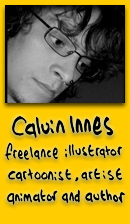 Illustrators play such an important role in the world of children’s publishing. This week we’d like to highlight the work of illustrator Calvin Innes.
Illustrators play such an important role in the world of children’s publishing. This week we’d like to highlight the work of illustrator Calvin Innes.
Innes is a full time freelance illustrator, artist, and animator who lives and works in Yorkshire, UK. In addition to his artwork, Innes writes stories for both children and adults. He has a couple of children’s books that will come out sometime this year.
Here are a few samples of his illustration work. You’ll find much more at his website and learn more about him by reading his blog.



Calvin Innes Childrens Illustrator illustratorCalvin Innes Childrens Illustrator illustratorCalvin Innes,
Childrens Illustrator,
illustrator



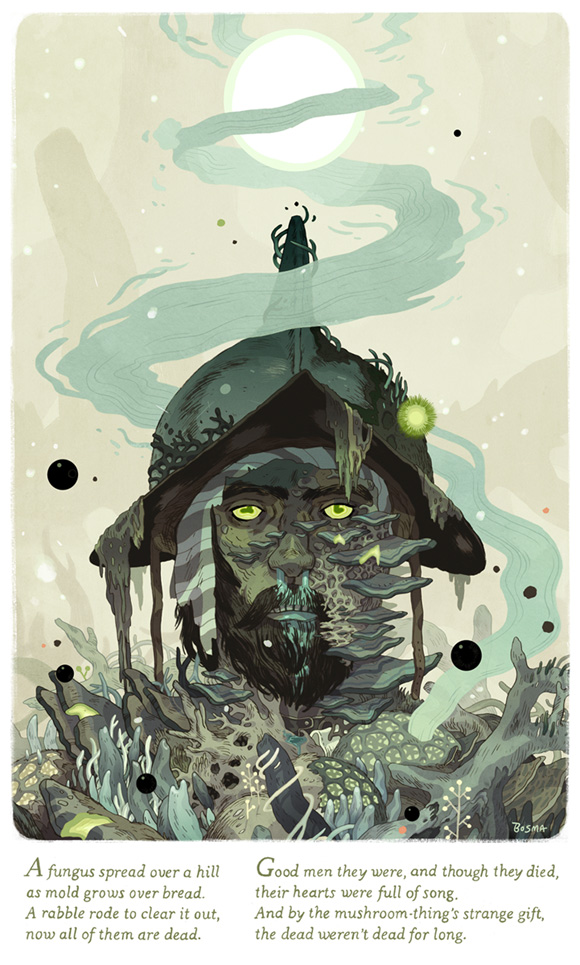
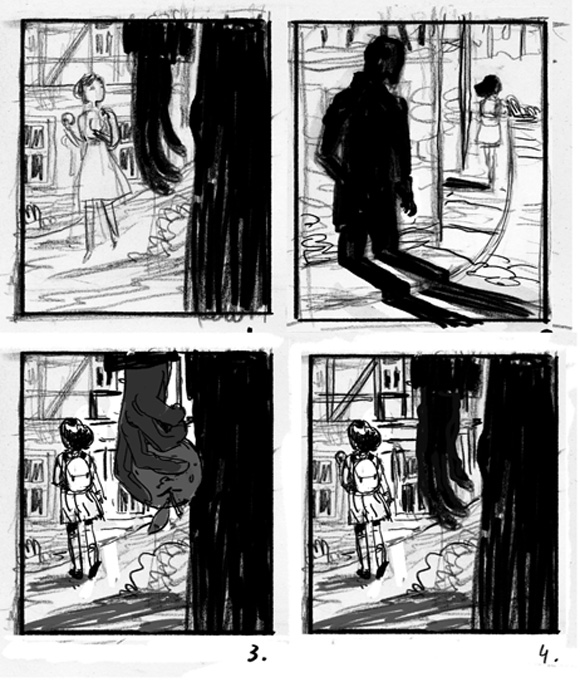
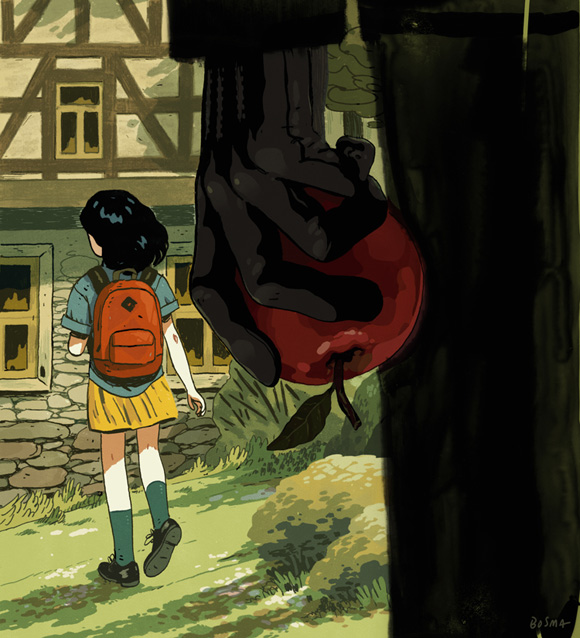
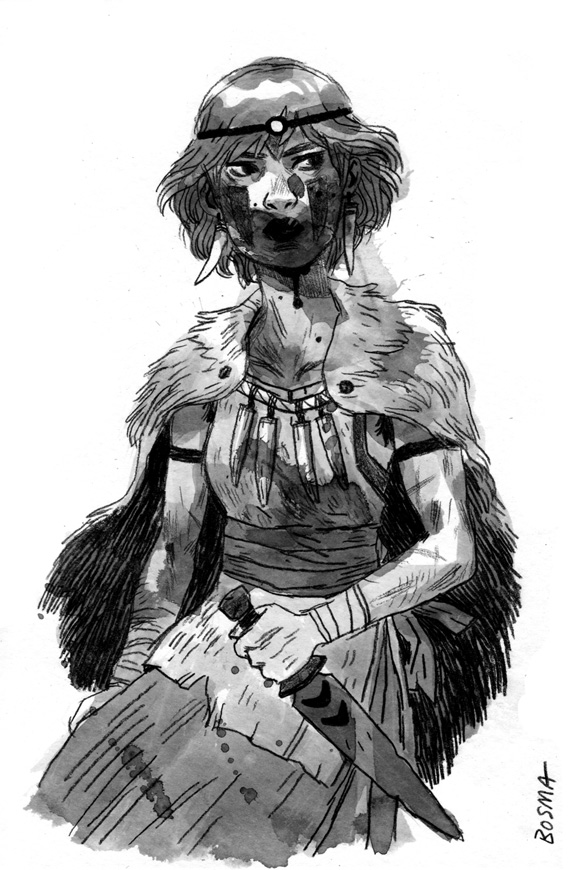
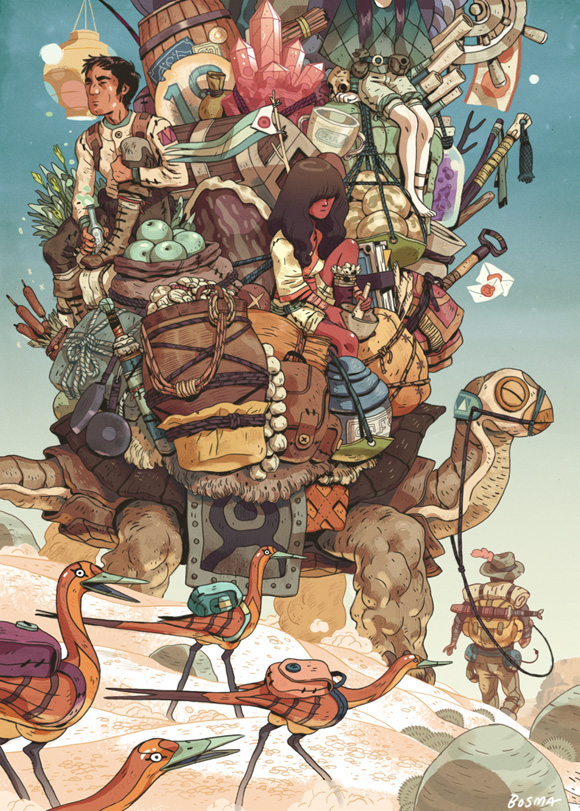
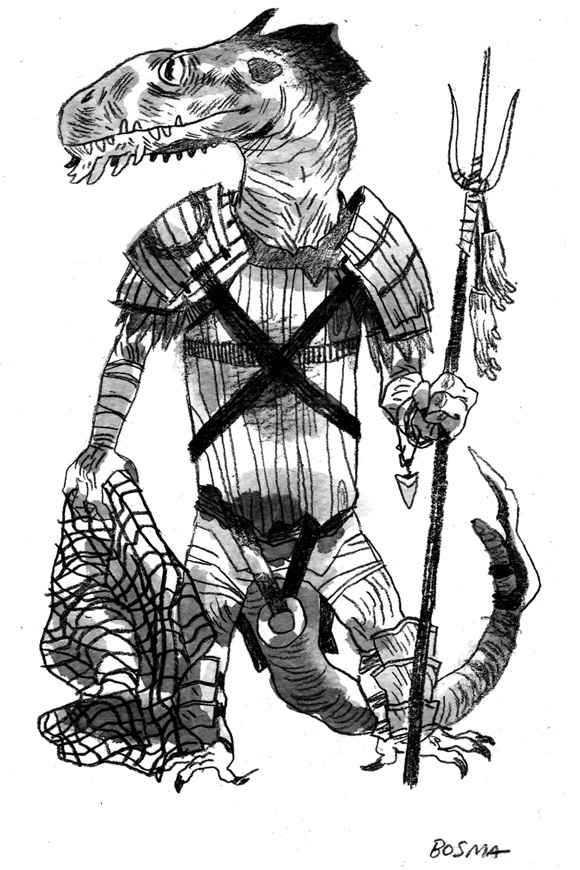
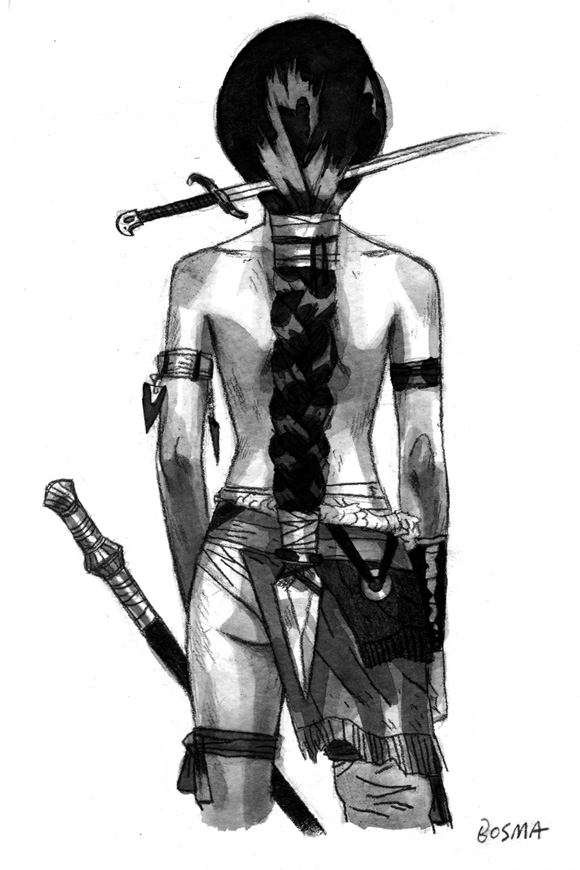
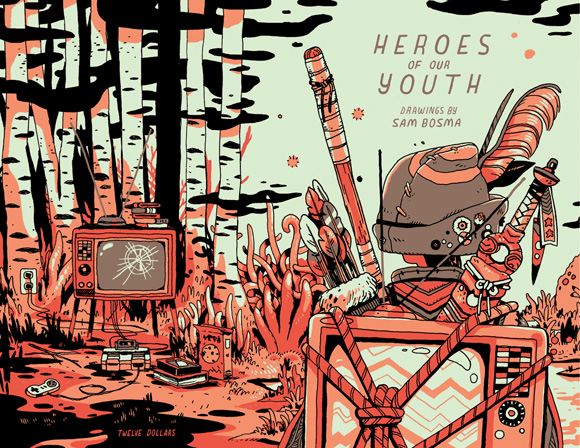
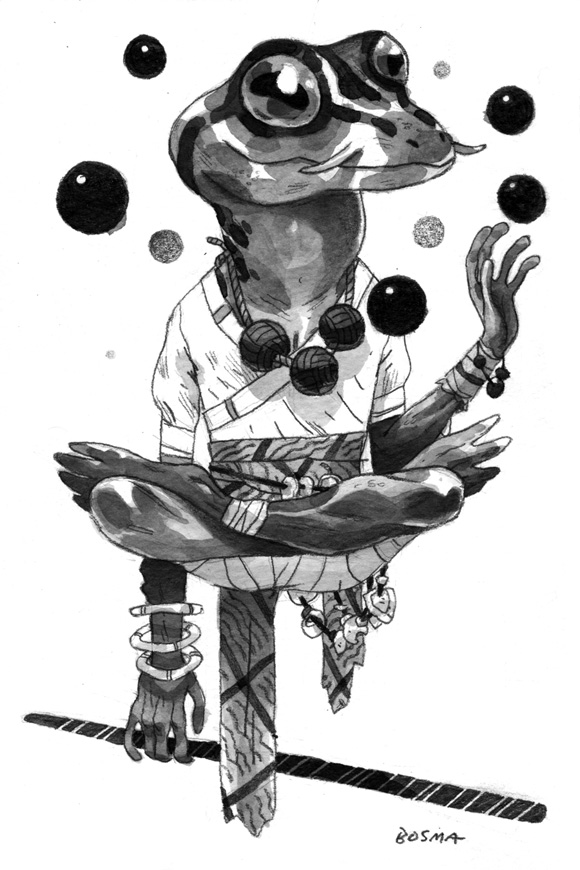
 We have been discussing Self-Published books for the last few weeks and we have been talking for months about how the publishing industry is changing, so I thought I should make sure you don’t miss this article written by
We have been discussing Self-Published books for the last few weeks and we have been talking for months about how the publishing industry is changing, so I thought I should make sure you don’t miss this article written by 





 Illustrators play such an important role in the world of children’s publishing. This week we’d like to highlight the work of illustrator Calvin Innes.
Illustrators play such an important role in the world of children’s publishing. This week we’d like to highlight the work of illustrator Calvin Innes.


Wow, that was REALLY enjoyable to read! It’s rare, but it CAN happen. It’s got to be a “perfect storm” scenario
Wow! Great stuff! More power to him. So am I reading it right, in that he self-published his short story first? Sounds like that’s what the article says. Just curious, and good to know. I have one I’d self-pub., didn’t know one could do that. My children’s story is almost finished with illustrations, too. I hired an artist whose design work was featured on The Today Show!
Good luck to you, Chris!
Thanks, Donna! You, too!
I just got this book last week and can’t WAIT to start reading it. The buzz has all been good. It is awesome that this self-pubbed work was able to rise to stardom by mostly word of mouth.
Please let us know what you think!
I read the first part for free and then bought the rest. He is a very good writer.
Kathy
I don’t have an e-reader, but figure in print it should be the same. How many pages total?